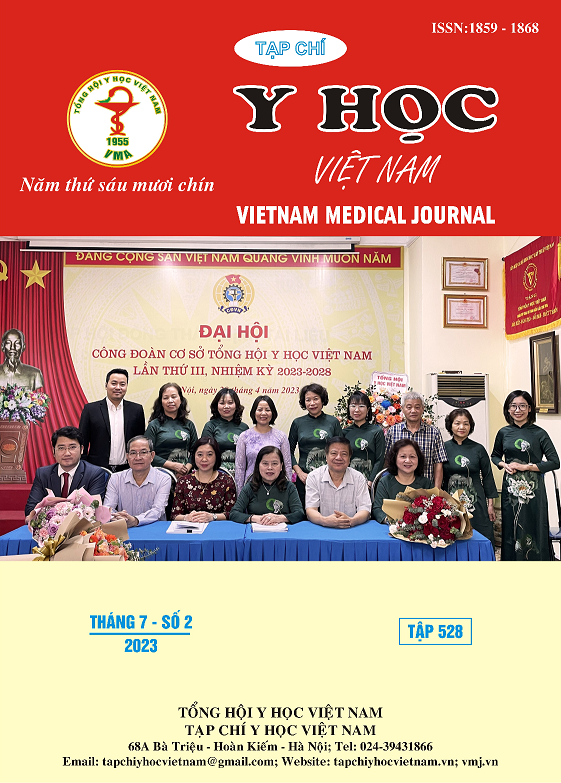RESEARCH ON SOME FACTORS OF NOSOCOMIAL URINARY TRACT INFECTIONS RELATE TO BLADDER CATHETERS IN NGHE AN FRIENDSHIP GENERAL HOSPITAL
Main Article Content
Abstract
Background: Urinary tract infections caused by bladder catheterization are among the most common infections in healthcare settings. In Vietnam, UTIs account for about 25% of hospital infections, of which 80% of UTIs are related to urinary catheterization. Research objectives: Determine the rate of urinary tract infections related to bladder catheters and understand the causes of nosocomial urinary tract infections related to bladder catheters. Subjects and research methods: A cross-sectional descriptive study. The study subjects included 98 patients with bladder catheterization over 48 hours at the Toxicology Department, Nghe An Hospital from January 2022 to August 2022. Results: The frequency of urinary tract infections related to bladder catheters was 17.2 patients per 1000 days of catheterization, with the incidence of patients over 50 years old being the highest with 58.54%, in which the male rate is only higher than that of female (70.6%). Time from insertion of catheter to diagnosis of nosocomial urinary tract infection was 8.6 ± 5.72 days. The rate of UTI was most common in the group with a catheter retention time of 8-14 days with 50%. Clinical symptoms of patients with UTI were mainly fever with 66.67%. Conclusion: The rate of urinary tract infections related to bladder catheters is high, with a large proportion of men over 50 years old. With characteristics such as the time of insertion of the sonde from 8.6 days and the main clinical symptom is fever
Article Details
Keywords
Nosocomial urinary tract infections, Bladder catheters
References
2. Lê Văn Hiệp, 2020. Đánh giá tình trạng nhiễm khuẩn tiết niệu bệnh viện liên quan đến ống thông bàng quang ở bệnh nhân điều trị tại khoa Hồi sức tích cưc, Đại học Y Hà Nội.
3. Vũ Thị Thanh Hà, Lê Thị Diễm Tuyết (2004): Đánh giá tình trạng nhiễm khuẩn tiết niệu bệnh viện ở bệnh nhân hồi sức cấp cứu có đặt ống thông bàng quang.
4. Bongyoung Kim1, Hyunjoo Pai2: Current status of indwelling urinary catheter utilization and catheter-associated urinary tract infection throughout hospital wards in Korea: A multicenter prospective observational study: 2017.
5. Catheter-associated urinary tract infection in adults Thomas Fekete MD uptodate June 2019.
6. Stamm W.E. - Nosocomial urinary tract infection. In: Hospital Infections. Bennett J.V. and Brachman P.S. Eds. Little Brown & Company, Boston, 1992, pp. 597 - 610.
7. Reducing Catheter-Associated Urinary Tract Infection in the Critical Care Unit. Mikel Gray, PhD, FNP, PNP, CUNP, CCCN AACN Advanced Critical Care Volume 21, Number 3, pp.247-257 © 2010, AACN
8. Weiner LM, Webb AK, Limbago B, et al. Antibiotic-resistant pathogens related to health-related infections: Summary of reported data for the National Health Care Safety Network at the Centers for Disease Control and Prevention, 2011.2014.


